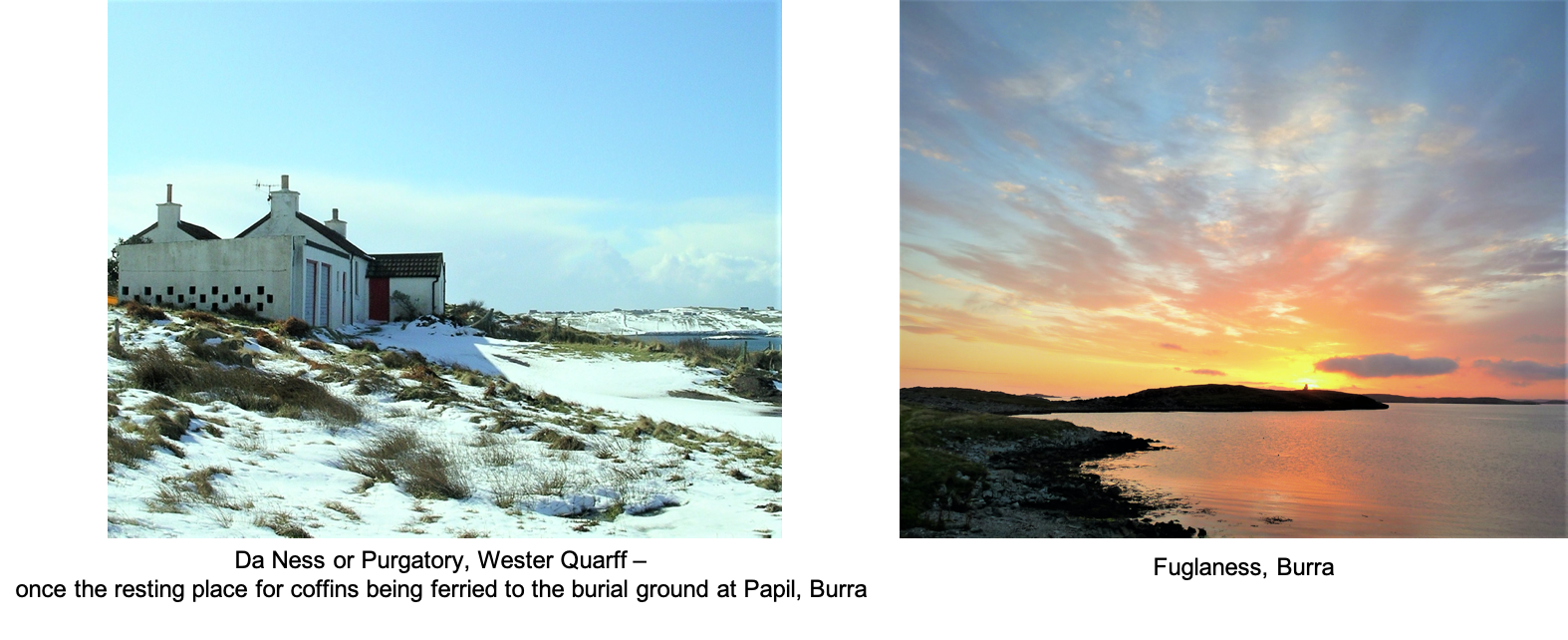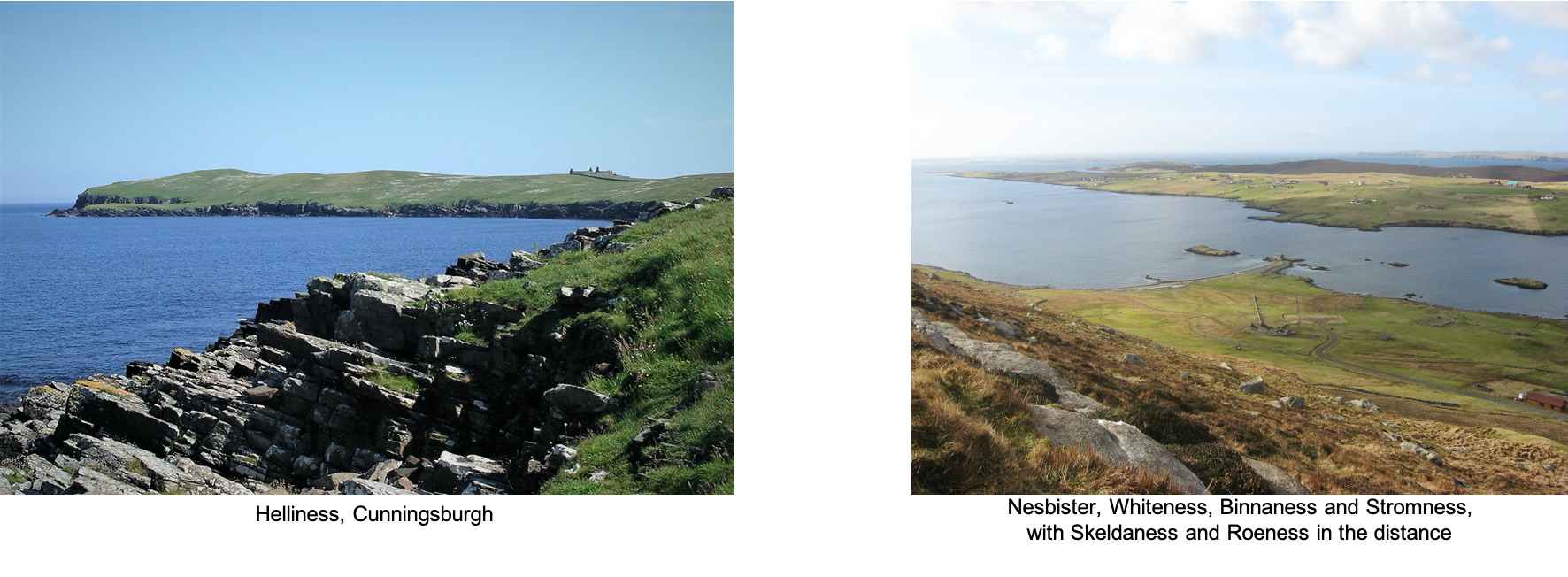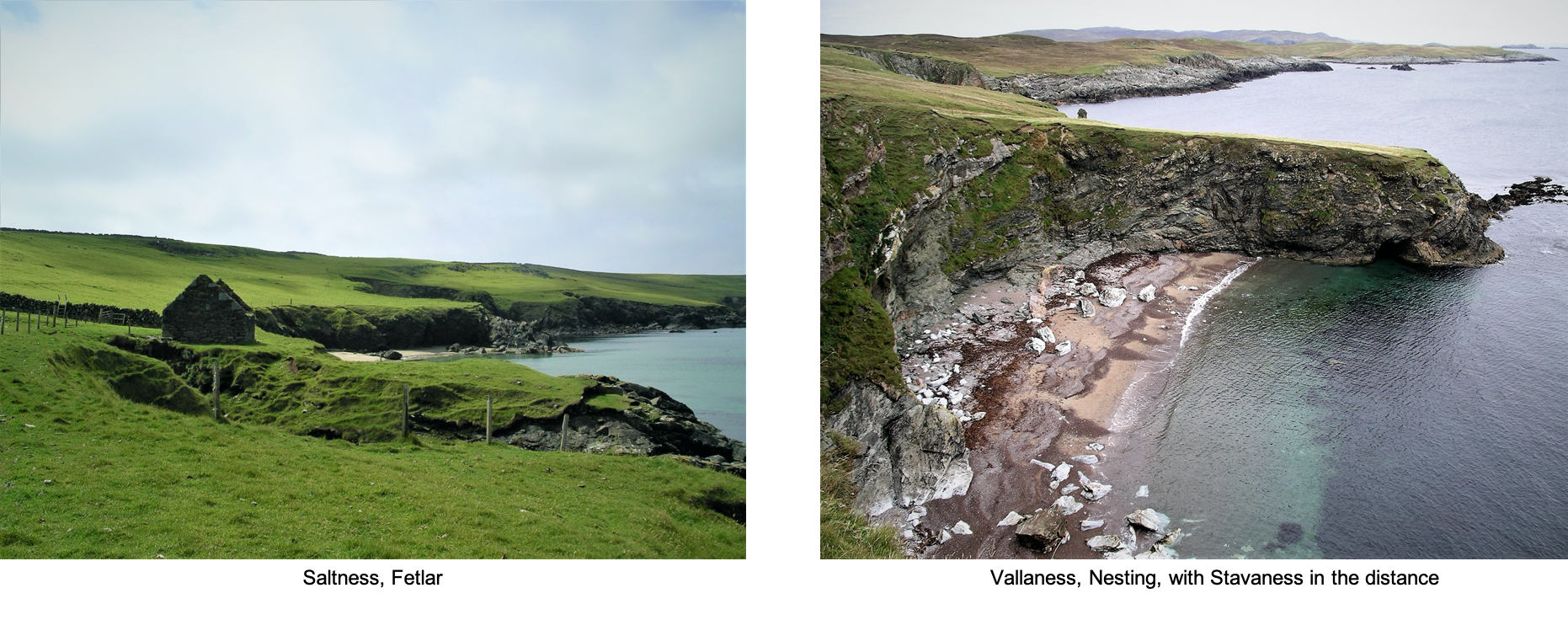Place-name of the week - Nesses
Published: 06 August 2020
Ness place-names are common throughout the Viking world. Old Norse nes described headlands and was also used in both farm and village names. Norway has over 2600 nes farm names, a quarter of them on the west coast. Faroese names include Snaranes, Kaldbaksnes and Kallanes; Grjótnes, Hauganes and Hvítanes are in Iceland; Caithness, Melness and Diúranais in northern and western Scotland; and Cregneash, Neston and Skegness in England. Ness names are also found in areas without Scandinavian influence; these are rooted in the Old English næss or nes, which has the same meaning.

The term is common in Shetland, both as a dialect word and in place-names. Nesses would have been important navigation markers for the incoming Vikings; names often describe the shape, characteristics or use of a headland. Shape is reflected in names like Muness (mjór: narrow), Snarraness (snara: snare, used in place-names where the coastline bends quickly) and Sellaness (segl: sail, this ness is sail-shaped). Helliness is from hella (flat ground), Stonganess from stöng (a mast or pole, used as a navigation mark) and Stapness from stapi (a conical hill or pointed rock).
Geology and vegetation give us Hamarsness (rocky outcrop), Eshaness (soft flaky stone), Turness (turf), Grutness (stony ground), Sandness (sand), Leiraness (clay or mud) and Lingness (heather). Other names describe the appearance of the headlands - Roeness is red and Gletness bright or shining. Land use and nearby features are pointed to in Valliersness (vollr: field), Hoganess (hoga: pasture), Watsness (vatn: lake), Stromness (straumr: stream), Heoganess (haugr: burial mound or cairn), Burraness (borg: fort) and Lunnaness (hlunnr: roller for drawing up boats). Nesses were often used for pasture, resulting in animal names such as Hestaness (hestr: stallion), Maraness (mara: horse), Queeness (kví: cattle enclosure) and Swinaness (svín: pig).

Some nesses are named after individuals. Folklore recounts the rivalry between two Unst giants Hema and Saxi; Herma (or Hermundar) gave his name to Hermaness. Two parish names also include the word. The local parliament or ting, situated at Neap, gave its name to Nesting. Dunrossness, commonly referred to as Da Ness, is the ness of dynröst (noisy strong current), as mentioned in the Orkneyinga saga; the same root word for the Sumburgh Roost. One of the best panoramas of nesses is from the viewpoint at Wormadale. Looking west you can clearly see Nesbister (ness farm), Whiteness, Binnaness, Stromness, Russaness, Foraness, Roeness and Skeldaness.

Ordnance Survey maps will often show two versions of the name, one for the farm or village, and a different form for the headland. Usual mapping practice is to split names for geographic features like nesses, wicks and firths into two words, but the pronunciation should remain the same with no split. Place-names with ness endings almost always place the stress on the first component; local folk will always help you to learn how to say any place-name as the same name can also vary between districts. If you have any information or photos of nesses, please contact placenames@shetlandamenity.org
Eileen Brooke-Freeman - Project Development Manager
We hope you have enjoyed this blog.  We rely on the generous support of our funders and supporters to continue our work on behalf of Shetland. Everything we do is about caring for Shetland's outstanding natural and cultural heritage on behalf of the community and for future generations. Donations are welcomed and are essential to our work.
We rely on the generous support of our funders and supporters to continue our work on behalf of Shetland. Everything we do is about caring for Shetland's outstanding natural and cultural heritage on behalf of the community and for future generations. Donations are welcomed and are essential to our work.

